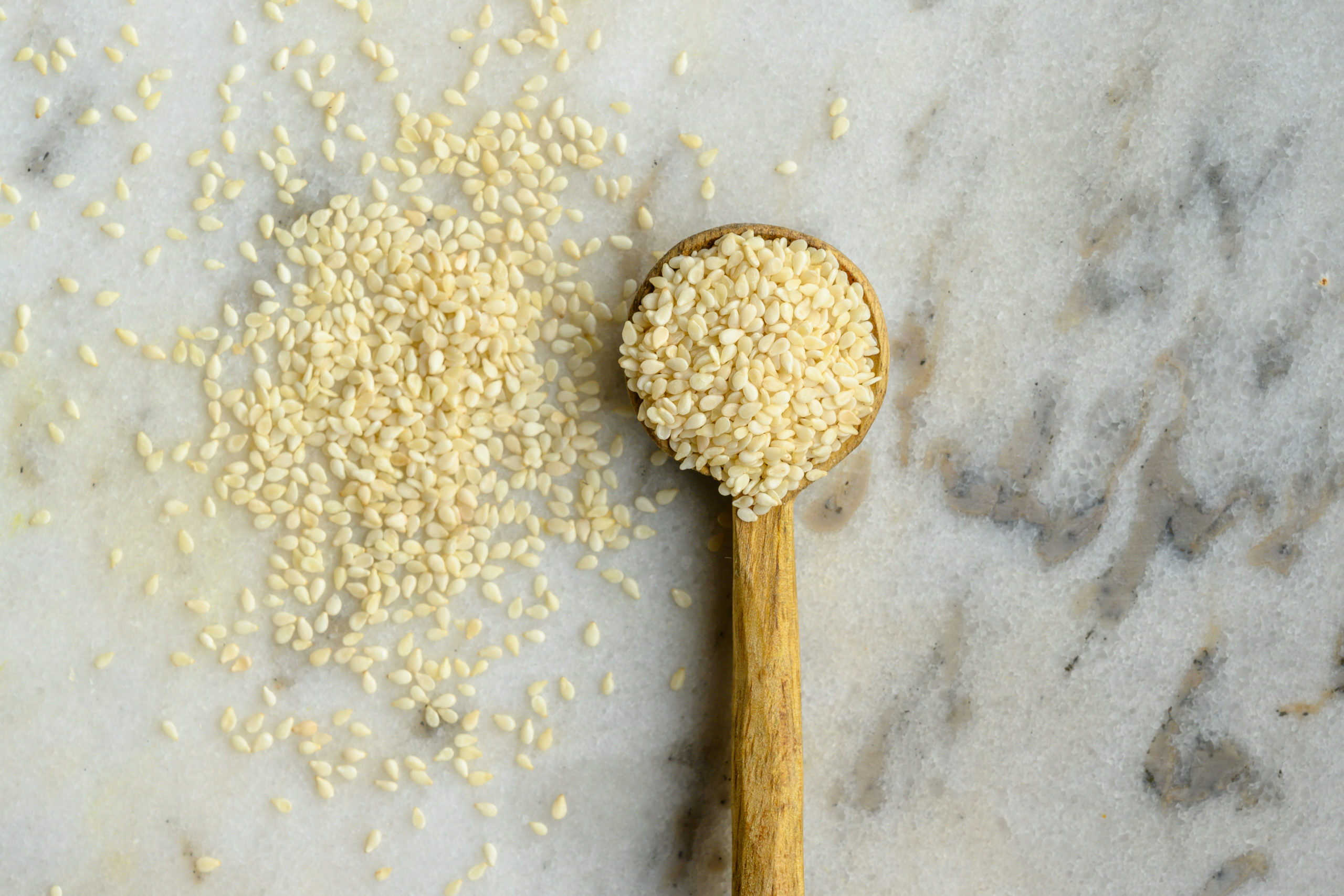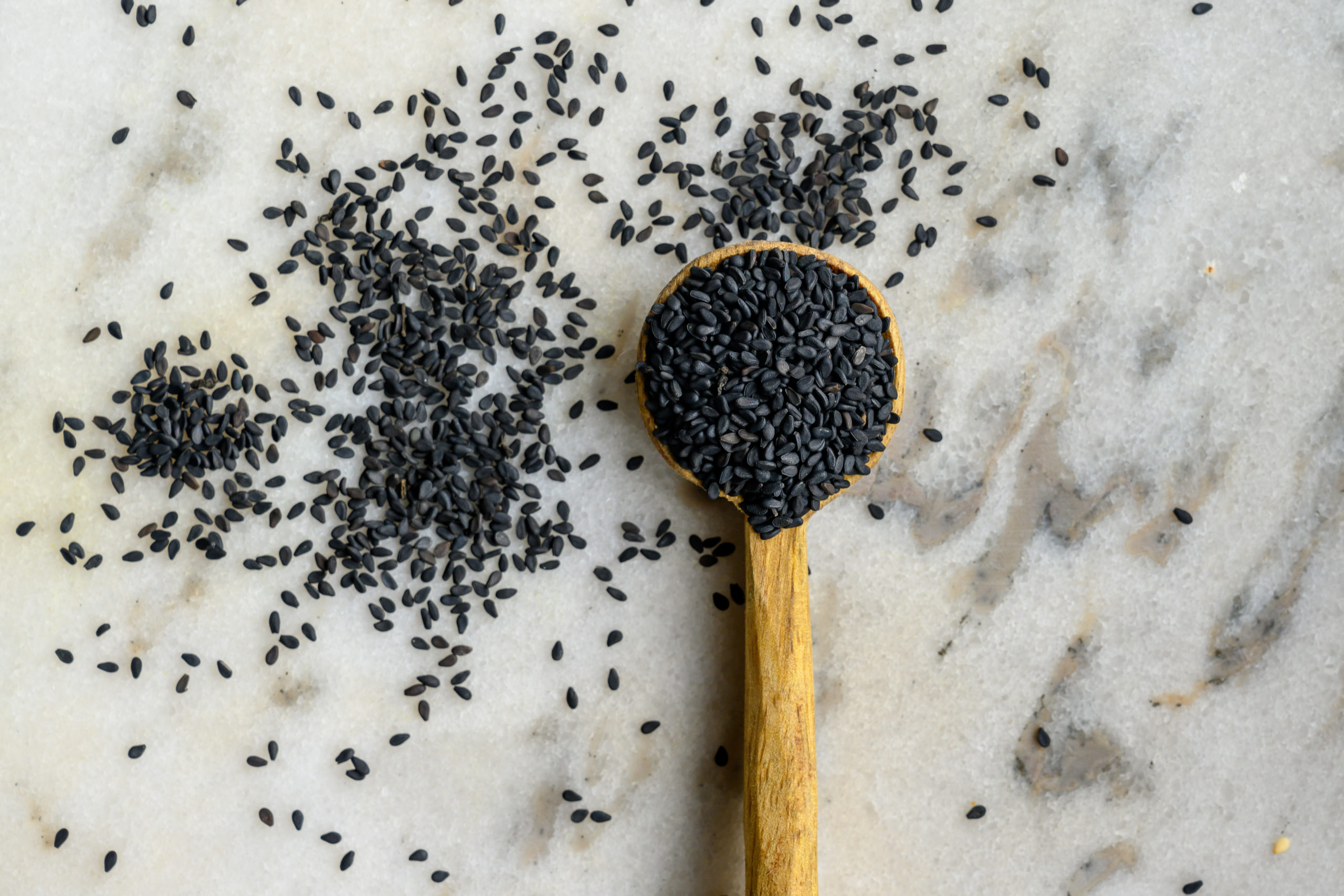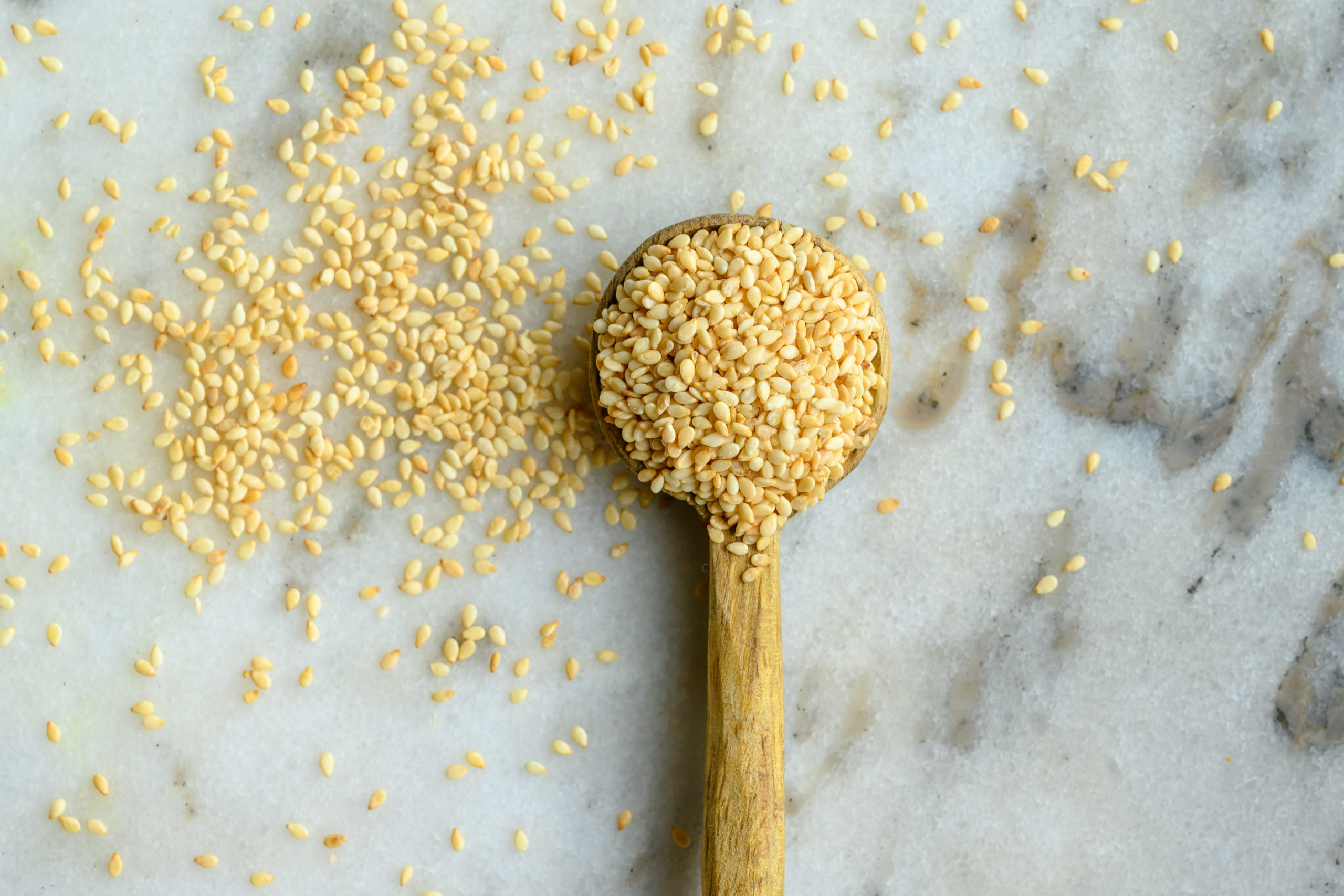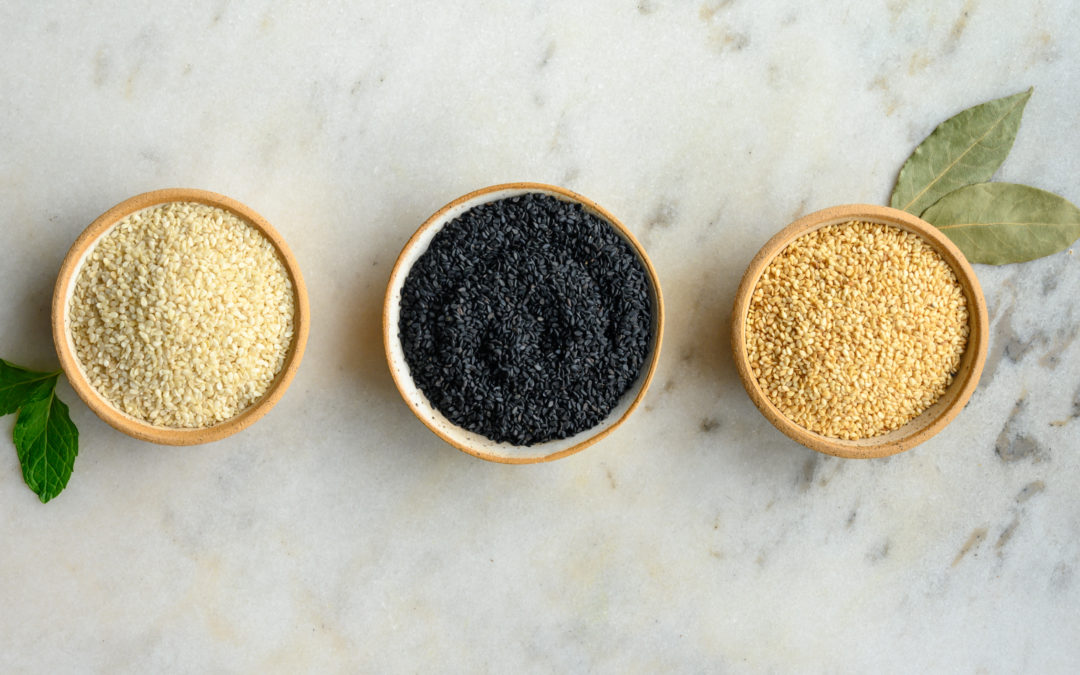Made into a wine as an offering to the gods, baked into modern day breads and cookies, pressed into nutritious oil: there’s no question sesame seed is a diverse crop with a rich and colorful history and a variety of uses.
In this blog, we’ll showcase the flavor, history, and common uses of sesame seeds, and discuss the many ways it’s used today.
Flavor
Sesame seeds have a mild, sweet, and nutty flavor and a satisfying crunch when eaten whole. They’re often baked or toasted to bring out a stronger almond-like flavor and aroma and make the seeds more evident in dishes.
The oil of sesame seed is pale yellow and odorless with a faint, mellow nutty flavor that makes it great for cooking and an excellent addition to stir fries and Asian-inspired cuisine.
When eating sesame seeds of different colors, you’ll notice that the flavor varies slightly between them. Black sesame seeds, for example, have a more earthy flavor than the other colors.
Appearance

Sesame seeds are found inside the fruit of a sesame plant, which is an oblong pod with ridges that contains small oval seeds that measure about ⅛ inch long. To remove the seeds from the pod, the sesame fruit is dried which causes it to begin to open, making it easy to shake the seeds free. Sesame seeds are covered in a husk that is a darker shade than the seed itself, and are most often removed from the husk before consuming. When revealed from the husk, sesame seeds can be white, black, red, brown, or tan,-. depending on the variety of the sesame plant itself. Most of the sesame seeds you’ll see in the U.S. are creamy white, while black sesame seeds are most commonly used in Chinese cooking.
History
Sesame seed is an ancient crop that appears in religious texts and fables. Carved drawings depict sesame seeds being thrown into big pots of food. Historic documents tell of a time when sesame seeds were used in cleansing rituals as a symbol of immortality in funeral ceremonies. During wars, sesame seeds were rationed for soldiers needing strength to survive their strenuous tasks.
Origins
Sesame seeds come from the Sesamum Indicum plant. Indigenous to the Sunda Islands in Indonesia and the oldest known oilseed plant in history, the plant has been cultivated for over 4,000 years. From Indonesia, sesame seeds made their way to China, Egypt, India, and Japan. Evidence suggests that oil extraction from sesame seed dates back to 900-700 BC in eastern Turkey, and that it’s been used in China for at least 2,000 years.
At Pacific Spice, we source our sesame seeds from India, Mexico, and Guatemala, which are the primary suppliers for sesame seeds in the U.S. The plant’s ability to survive without water in very hot and dry conditions makes it a great crop for areas with desert-like conditions that would otherwise be unable to produce crops.
Quality, Sourcing, and Safety
Pacific Spice is dedicated to producing the highest quality spices. To do that, we source quality whole seeds and process and clean them locally. Under our full control, we can ensure that our strict manufacturing methods far exceed the quality standards of U.S. food manufacturers. This results in product that is pure, free of contaminants and adulterants, and a flavorful addition to your favorite dishes.
Storing
Sesame seeds should always be kept in an airtight container and in dry, dark, and cool conditions.
When stored in an airtight container at room temperature or in a refrigerator, sesame seeds will last up to 3 months or 6 months, respectively. When stored in an airtight container in the freezer, sesame seeds can last for up to a year.
Uses and Nutrition

Sesame Seeds
With high vitamin B1, dietary fiber (benefitting digestion), high concentration of polyunsaturated (healthy) fats, and a multitude of vitamins, and minerals, sesame seeds are used for a variety of nutritional purposes.
Many people like to toast or bake their sesame seeds to bring out the nutty flavor and add them as a decorative garnish to savory dishes. In Chinese cooking, sesame seeds are used to coat foods to give them a crunchy exterior. In the U.S. you are likely to find sesame seeds in crackers, salad dressings, soups, rice dishes, and hamburger buns.
The second ingredient in Hummus is Tahini (or Tahina), and Tahini is almost entirely (you guessed it) sesame seeds that have been ground and made into a paste . We wouldn’t have Hummus without sesame seeds!
Sesame Oil
Sesame oil is a wildly popular oil for cooking because sesame seeds contain about 50% fixed oil content, making it very stable in high heat. It’s used commonly in high heat cooking like stir frying and in Asian-inspired cuisine.
Sesame oil is also celebrated for its skincare benefits, and is used for its hydrating and antioxidant properties and as an ingredient in soaps and cosmetics in India.
We’ll leave you with one final fun usage fact: The flowers of sesame plants can be pressed for perfume!
Talk about versatile.
PSC Sesame Seeds

At Pacific Spice, we carry whole sesame seeds in a variety of colors:
- Hulled (White)
- Toasted Hulled
- Natural
- Black
Whether you choose just one or try all the varieties, we encourage you to use your imagination and find your own favorite uses for the long-celebrated and versatile sesame seed.
Perhaps it’s a dish from your home country, or one you just invented – Do you have a favorite dish that includes sesame seeds? Connect with us on Instagram and share!


Very interesting. Thank you. You forgot candy, like Halavah.
Sesame seed is a versatile crop that can be used in a variety of dishes. It has a nutty flavor and can be used in breads, pastas, and other dishes.
Sesame seed is a versatile crop that can be used in a variety of dishes. It has a nutty flavor and can be used in breads, pastas, and other dishes.
I first created a Sesame Tahini Custard Pie in 2016, but in 2022 I introduced it on The Great American Recipe, on PBS and now it is one of the top visited recipes (of 500), on my blog! https://whiskanddine.com/tahini-custard-pie/